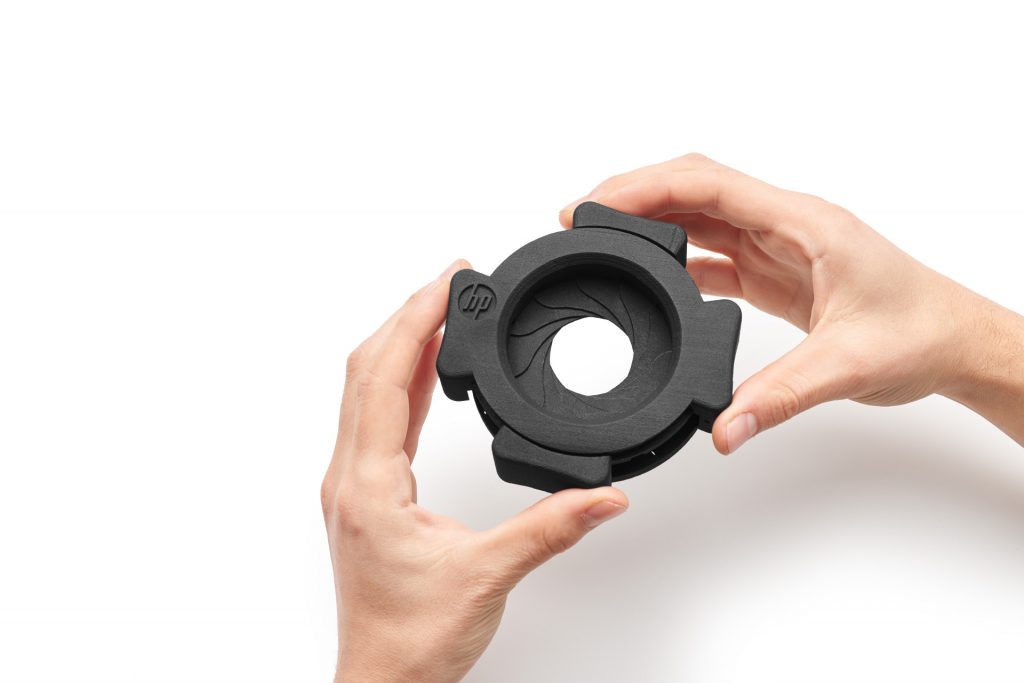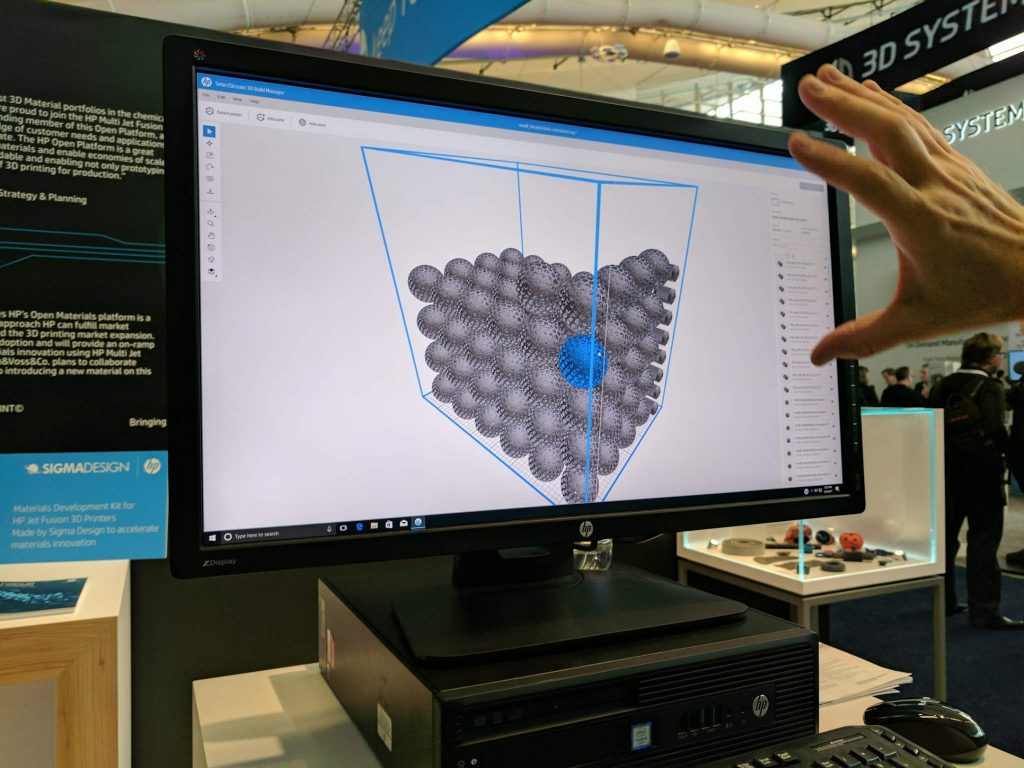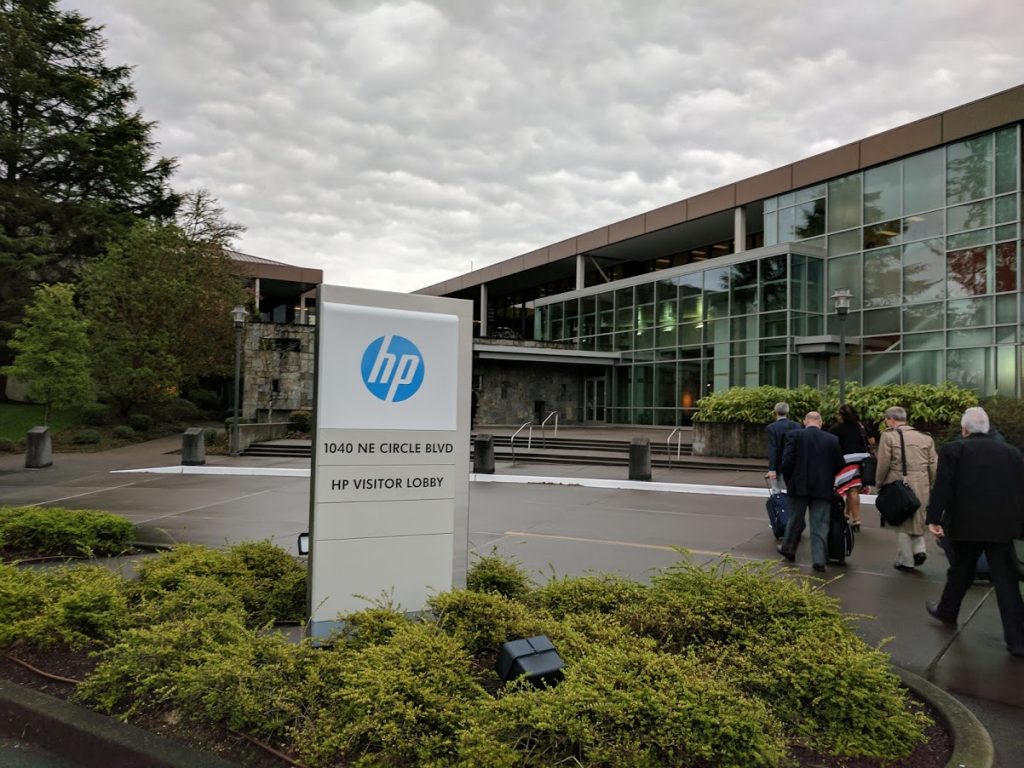The past fortnight has been a busy time for HP. The U.S. company has made several announcements relating to the expansion of their Multi Jet Fusion 3D printing system in Japan and China.
I spoke to Ramon Pastor, vice president and general manager, HP Multi Jet Fusion, and several others in charge of HP’s venture into 3D printing to find out more about how the roll out of Multi Jet Fusion is going and their plans for the future of 3D printing.
Highlights
- Significant increase in speed of Multi Jet Fusion with software update
- Early customers are now placing repeat orders for 3D printers
- 3D prints produced to date on Multi Jet Fusion machines is over half a million
- Open materials strategy to drive material cost down and improve economics of MJF
- Next materials to be developed will be lower cost
- HP strategy re: Industry 4.0 and the Fourth Industrial Revolution
- HP’s primary focus for the rest of 2017
Expansion into Asia Pacific and Japan
I asked Qun Zhang, head of HP’s 3D Printing Sales for Asia Pacific and Japan (APJ), about the company’s expansion into the Asia-Pacific region and how HP is working on scaling of the 3D printing business. Zhang says, “APJ is a very important place in terms of the manufacturing and the market.” He continues, “We have over 70% of the population globally, and this means in the area of customization of products would be key a market.”
HP’s 3D printing solution is, “ten times the speed and half of the cost,” says Zhang. “In the long run we’re going to have the biggest variety of materials. All this combined we’re going to have the best choice for the manufacture of consumer products in the region.”
An important driver of this will be the automotive sector according to Zhang, “In APJ we have 60% of the global car manufacturing industry. In the long run APJ will probably outrun the U.S. and EMEA so this this is a great start for us.”
Ramon Pastor gives further details about HP are handling the scaling of their 3D printing business, “Since we started shipping, customers who have brought our systems have produced more than half a million parts.”
Pastor adds that this, “is remarkable given that we were scaling very slowly at the beginning and now we are ramping up in one of the most important regions in the world. The second thing is that we are having now an important number of customers with repeating sales.”
These are customers that bought our products in the first months are now putting together important orders. These are customers who have used the system and verified that this is the production tool that they needed to scale their business.

User feedback on HP’s Multi Jet Fusion 3D printers
Given that the HP 3D printing system has now been available for 6 months I asked Ramon Pastor about user feedback to date. He classes the feedback into 3 categories, productivity, accuracy and service and support.
Pastor says, “Regarding productively, if you ask our early customers this is the thing that has struck them the most. This is even without the systems at full speed, this [full speed 3D printing] will happen with the latest release of the firmware.”
The firmware update was scheduled to happen last week. 3D Printing Industry will be bringing you an update on user experience of HP’s Multi Jet Fusion 3D printers soon.
Pastor says HP has received, “A lot of feedback on the accuracy and the representations of very small details, that was something that they had never seen before.” In terms of installations Pastor says customers have remarked upon, “how quick it was to do the first production runs and any time we did more drops of functionality the feedback has been… We are standing on something that really sets us apart from other vendors that they were used to deal with.”
To grow the installed base further will require an expansion of the materials available for 3D printing with the Multi Jet Fusion. “We truly believe that to scale the number applications we need a breadth of materials and basically to improve the break-even point of economics ultimately we need to drive material costs down. And this is really what is at the core of our open materials strategy, and we will deliver results with that,” says Pastor.

New 3D printing materials coming
Dr. Yi Feng, manager of 3D printing materials partners, Asia Pacific and Japan, HP Inc. Dr Feng leads the materials partner business in Asia Pacific. Speaking about Sinopec joining HP materials partners including BASF and Evonik, he explains,
Sinopec is the first materials partner that we have brought on board in China to be part of the Open Materials Platform. We are working with the company to identify the potential material that is going to be compatible with our Multi Jet Fusion technology. So far we have already received the materials candidate from them and we already starting the initial screening of the material candidate.
The materials candidate in question is a polyolefin-based material. Compared with Nylon materials, 3D printing with Polyolefin material is anticipated to have a lower material cost. Dr. Feng says the material is, “considered to be a commodity based powder. So 3D prints made with the powder should be a lower cost.”
You can read more about HP’s Open Materials platform here.

How does HP’s Multi Jet Fusion compare to other 3D printing technologies?
I ask about how Multi Jet Fusion compares to other powder based 3D printers in the market. Ramon Pastor tells me,
In terms of powder management the way that we have engineered the system is in terms of an end-to-end perspective. So basically the customer receives powder in a package, they put it in the processing station and basically the print station automatically exacts the powder to the build unit. So basically when the build unit goes to the printer, the process station recycles the powder so actually you can virtually reuse all the powder that has not been solidified in a part. So really this is almost a closed system in terms of putting powder into the machine in terms of putting powder in. Feedback from customers is very good.
HP has previously called out the $6 trillion manufacturing sector in the APJ region as a major opportunity. I asked Ramon Pastor more about this opportunity, what the Fourth Industrial Revolution looks like, and HP’s role within it.
When we talk about the Fourth Industrial Revolution it is really what in Europe we refer to as Industry 4.0. The manufacturing market is $6 trillion today in APJ. So really, our aspiration is to focus on how can move to a production paradigm that is more distributed, more personalised, more on demand and much nearer where the final customer is. We want to give the customer the tools to be able realise this change in manufacturing.
The key vectors HP is approaching are product performance, quality, speed, repeatability, material breadth, material cost – is the main driver of driving the break even point to the hundreds of thousands of parts and beyond. So basically awareness of our customers to take full advantage design for additive and to create more efficient designs.
Eventually to help them to take advantage of distributed manufacturing to re-engineer how they design their supply chains, and finally we need to advance regulations and standards. These are really the factors and the vectors that we all pushing to accelerate this view of the Industry 4.0.
You can read more about HP’s perspective on the future of 3D printing in our interview with HP CTO Shane Wall. Also, Tim Weber the Global Head of 3D Printing Materials and Advanced Applications at HP recently gave us his vision for the future of 3D printing.
With HP expanding rapidly into the 3D printing industry and the market now having had time to test Multi Jet Fusion, we’re taking a closer look at the technology. Sign up to the most widely read newsletter in the 3D printing industry to learn more and follow our active social media accounts to be the first in the know.



